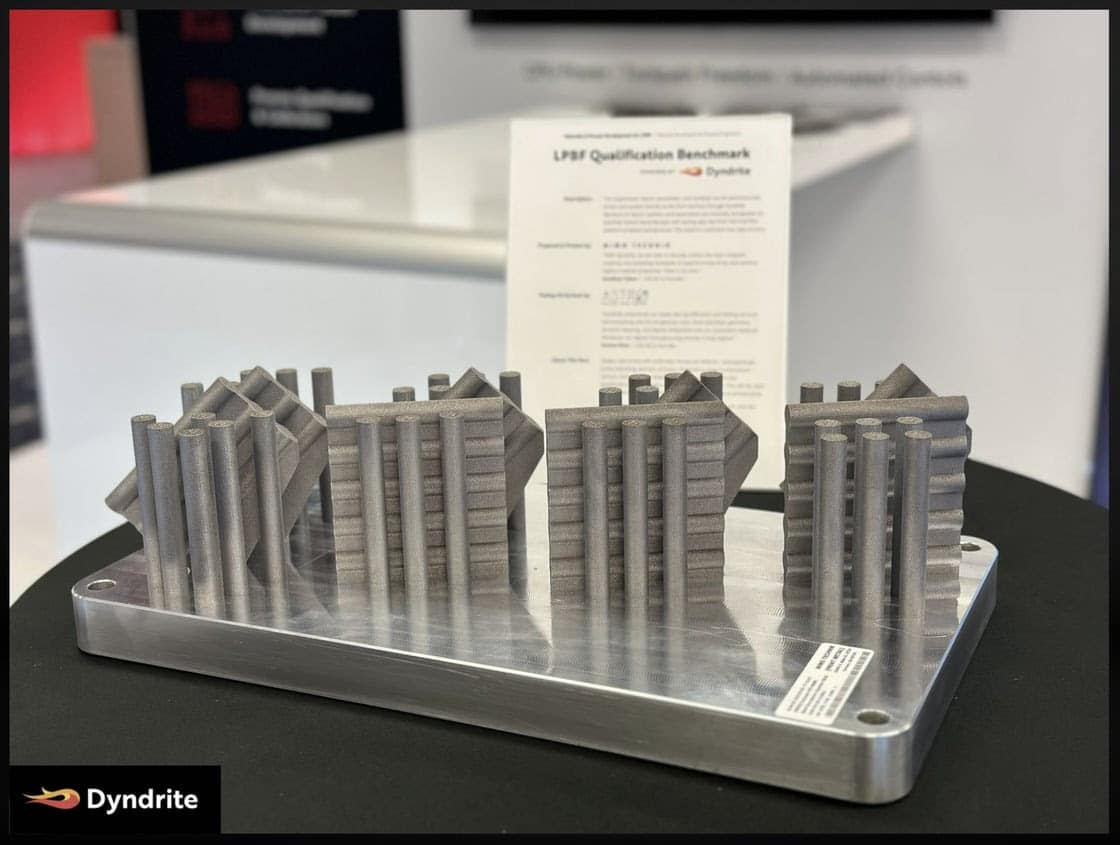Dyndrite, providers of the GPU-accelerated computation engine used to create next-generation digital manufacturing hardware and software, has entered a new partnership with MIMO Technik and ASTRO Mechanical Testing Laboratory.
MIMO Technik develops AM solutions for aerospace, rocketry, defense, and motorsport clients. ASTRO executes mechanical and metallurgical testing for additive materials developed for spaceflight hardware, launch vehicles, and satellites. Together, the team of experts offers specialized solutions to support critical programs for aerospace and defense. Through the MASTRO process, the organizations qualified materials for industry primes such as Boeing, Lockheed Martin, and Northrop Grumman.
MIMO Technik and ASTRO chose to collaborate with Dyndrite on the development of the MASTRO process in order to streamline and automate a closed-loop source for additive production and qualification. MASTRO is MIMO Technik and ASTRO’s internal proprietary parameter development process that involves experiments to determine values for all variables that influence the SLM process. Qualified material is now in production for fracture-critical hardware such as landing gear, propulsion systems, payload structures, and defense applications.
MIMO Technik and ASTRO will leverage Dyndrite’s software tools to codify MASTRO build recipes which ensures repeatable quality and traceability. Automated build layout, serialization, and reporting are all necessary for a scalable qualification process for machines, materials, and process parameters. Currently, MIMO Technik exclusively uses ten SLM Solutions L-PBF machines – reportedly due to their open architecture, continued support, and philosophy for advancement.
“The business case for being an open architecture metal 3D solution provider is at its core about making our customers more successful,” said Garett Purdon, Vice President of Sales for the Americas at SLM Solutions. “It’s about creating choices for our customers and removing arrogance – we’re not a jack of all trades but a true master of one. We acknowledge that others can add additional value.”
Manufacturing on Demand

“Parameter development and qualification is a tedious and time-consuming process,” said Steve Walton, Head of Product at Dyndrite. “Dyndrite’s tools allow users to rationally explore the parameter space of interest using their own algorithms while building upon provided tools. Our APIs are designed to support the user in these studies and algorithmically provide the build and toolpath pedigree to ensure data can be used in research, qualification, and production environments. The build and toolpath automation provided allows engineers to explore the solutions to new process problems, instead of spending energy on manual, error-prone data entry.”
To date, 3D metal printing machine calibration and qualification, followed by materials and process development, have been a costly (upwards of $1M), labor-intensive, and long-duration process often requiring multi-year commitments. The Dyndrite / MIMO Technik collaboration aims to serve as an exemplar for qualifying additive manufacturing processes for Laser Powder Bed Fusion (L-PBF) machines.
Dyndrite recently unveiled its first end-user AM application, Dyndrite Materials and Process Development for LPBF. This GPU-based 3D application was designed for materials and process engineers developing new metal alloys and parts for laser-based 3D metal printing. It takes maximum advantage of the powerful features within Dyndrite’s Accelerated Computation Engine (ACE), including, the ability to perform 3D geometric queries in order to detect and optimize for difficult geometric features such as domes, cantilevers, and thin walls. It provides engineers with the ability to improve build rates by easily working with multiple layer heights and parameter settings, improves part quality through the use of rational APIs for distributing the process and developing toolpath trajectories, and deploying support strategies that deliver maximum flexibility. Customers using Dyndrite can also easily create shareable build recipes (Python) that provide all the necessary information required to recreate a build and drive a variety of 3D metal printers, including Aconity, EOS, Renishaw, SLM, and others.
“Scaling Digital Additive Manufacturing to an Industrial level is the next step for strategic Aerospace and Defense infrastructure,” said Jonathan Cohen, CEO and Co-founder of MIMO Technik. “Dyndrite is the platform we are using to build that reality. Empowering our engineers from rapid material development to creating qualified aerospace workflows for our growing AM facility.”
“We have characterized dozens of materials through the MASTRO process over the last two years.,” said Humna Khan, CEO, and Co-founder of Astro. “Our partnership with Dyndrite will accelerate the efforts to streamline testing efficiencies in order to get customers to production sooner.”
Dyndrite and MIMO Technik will also partner to develop advanced scan path strategies for productivity and quality on SLM machines for a variety of alloys used by MIMO Technik’s customers.
You might also like:
Linde launches LINSPRAY Connect post-AM cold spraying gas supply solution: Cold spraying is a material deposition technique where tiny particles of between 5 to 50 microns are propelled onto a substrate using high-pressure gases. The particles, which start at ambient temperatures, are placed in a nitrogen or helium gas stream which is then heated and accelerated through a supersonic nozzle at speeds between 500 to 1200 meters per second. During the process, the temperature of the metal powder remains far below its melting point, ensuring the metal particles stay in their solid state, retain their unique properties, and remain oxidation resistant. The coating created via this process is ductile, which also prevents any risk of embrittlement under stress.
* This article is reprinted from 3D Printing Media Network. If you are involved in infringement, please contact us to delete it.
Author: Edward Wakefield


Leave A Comment